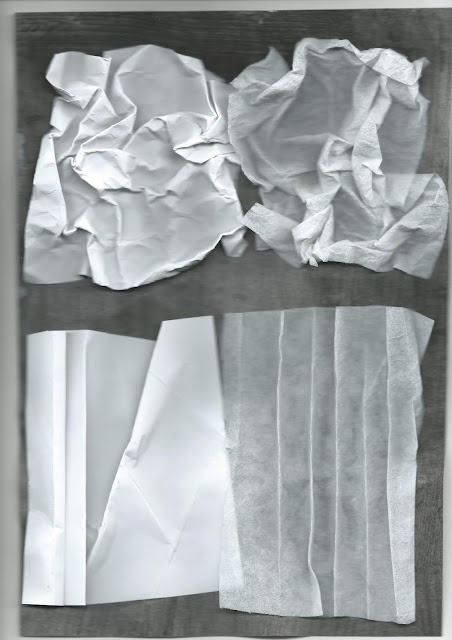SKETCH BOOK
 |
| Page 25 |
 |
| Page 26 |
 |
| Page 27 |
 |
| Page 28 |
 |
| Page 29 |
 |
| Page 30 |
Satin snipped with scissors to form a fringe, fabric pleated then marked with a soldering iron, pleated again and marked again with a soldering iron.
Voile frayed and cut with pinking shears, marked with a soldering iron.
Wadding cut repeatedly with zigzag template using a soldering iron.
Pelmet vilene cut with wavy template (twice) and joined together with dots formed with a soldering iron.
Pelmet vilene cut with (half) wheel template using a soldering iron.
 |
| Page 31 |
Medium weight silk cut with herb scissors. The scissors tend to 'chew' their way through fabric, but cut parsley perfectly!
Linen scrim, frayed, pulled and cut.
Cotton velvet, frayed, edge cut with pinking shears, slashed down centre and threaded with pelmet vilene.
Calico cut on the bias, cut into zigzag edge, frayed (two layers). Long frayed threads in dip of zigzag draped over top zigzagged layer. Long frayed threads removed from top layer.





























